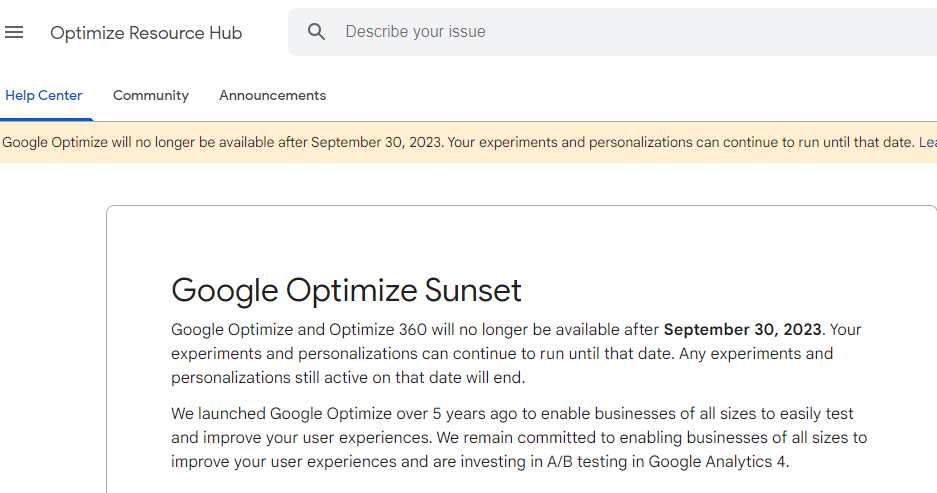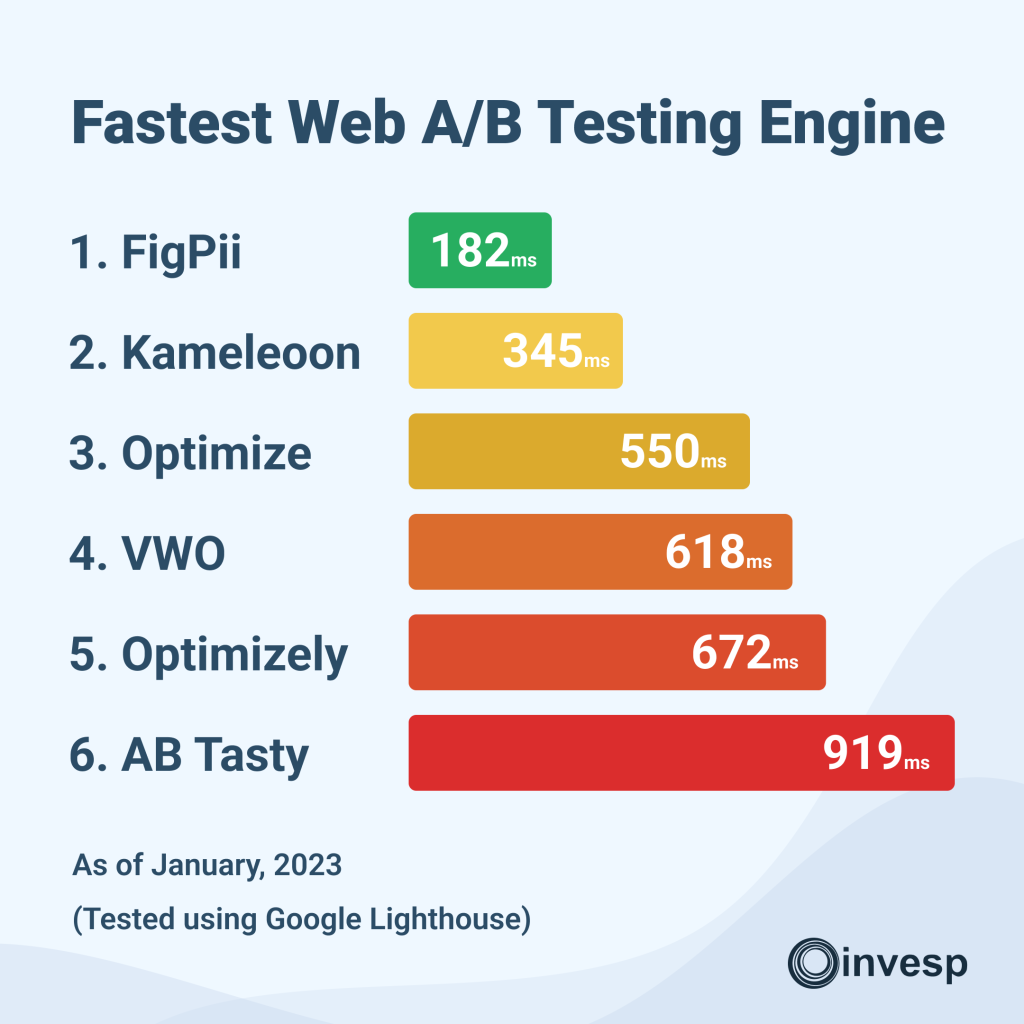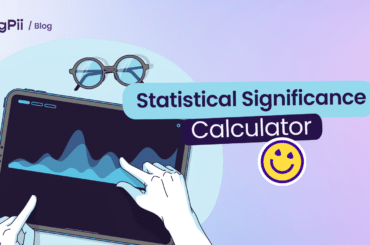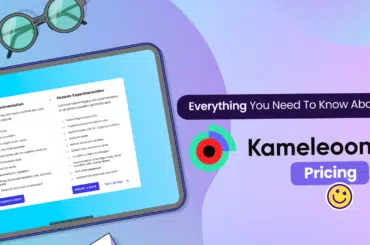When you own a business, following your guts won’t work to run it. It will help if you do some research before making any business decision.
The same applies to optimizing your website. You can’t just follow your guts. You need to go through the process of research before changing anything on your site.
In actual fact, 75% of all conversion optimization work is (or has to be) research.
If you have enough traffic/conversions, A/B testing also must be part of your research process.
The good news is there are dozens of A/B testing tools out there. The bad news is not all of them are reliable. Some are better than others in terms of data accuracy.
That also means that you’ve to do some research before you use these testing tools. Trust me; you don’t want to use the wrong data to optimize your site.
I created this series of blog posts to talk about different A/B testing tools. Each post will compare two tools from other vendors. That will help you know the pros and cons of each tool, get an insight into their pricing plans, and the difference in features.
The first two testing tools to go under the microscope are Google Optimize and AB Tasty in this series.
Google Optimize and AB Tasty have a lot of similarities. This article will shine the spotlight on their differences.
Let’s get started…
First, Let’s Start With Google Optimize
What is Google Optimize?
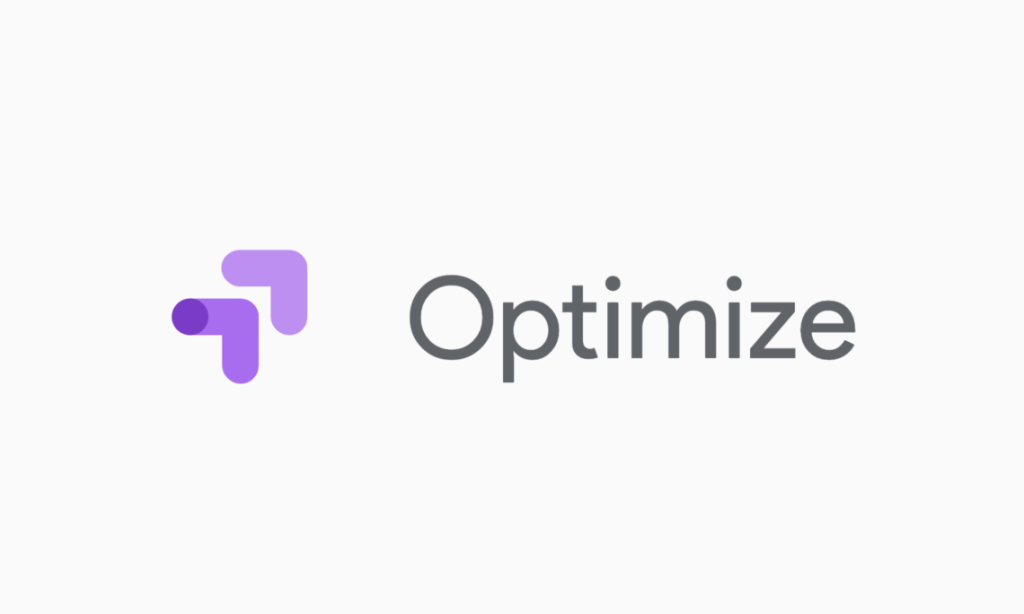
Google Optimize is a Google tool and the follow-up to their previous A/B testing tool Google Content Experiments, built into Google Analytics.
Google Optimize is made for small to medium-sized businesses.
It lets you test different variations of your website and landing pages.
The selling point of Google Optimize is its integration with Google Analytics. It gives you automatic access to behavioral insights and various segments.
Update on Google Optimize
Google recently announced that Google Optimize would no longer be available for use after September 30, 2023. Google Optimize has been an effective and free A/B Testing and Experimentation platform available to marketers for over five years. However, Google said it does not have features and services that its customers require to run A/B tests properly.
What Should You Do
There are other A/B testing platforms that you can seamlessly migrate to if you are formerly a Google Optimize user. One of these platforms is Figpii, which currently offers a free migration service and support to help you transfer your data from Optimize to FigPii.
According to Google Lighthouse, Figpii is also the fastest Web A/B Testing Engine with a speed of 182ms.
Features and advantages of Google Optimize
Easy to set up and use
Just like signing up for Google Analytics, all you have to do in Google Optimize is enter your email address.
Also, it is easy to use. You insert the link to the website you want to optimize, then list your variants.
Then, you will be asked to download a free Google Chrome extension so you can edit your website in live mode.
After you download the extension, you can change the parameters of each element during your website testing, like the color, size, opacity, etc.
Native navigation
You can link your Google Optimize account with your Google Analytics account.
Google Analytics will help you with having data to assist you in Google Optimize. For example, about pages you need to test, for how long, which device to run the tests on; mobile or desktop or both, etc.
Price
This is another selling point for Google optimize; it is free!
As I mentioned before, all you have to do is to have a Google account. There are not any hidden fees or in-app purchases.
Your free account offers not only A/B tests but also multivariate tests.
Just for your information:
An A/B test compares the conversion rates of two versions of a landing page based on live traffic. It tracks how visitors interact with the landing page they are on.
Multivariate testing uses the exact core mechanism as A/B testing but compares more variables and reveals more information about how these variables interact with one another. As in an A/B test, traffic to a page is split between different versions of the design.
A multivariate test aims to measure the effectiveness of each design. However, it works just like A/B tests. The only difference is that it compares between more variables.
Disadvantages of Google Optimize
Three experiments simultaneously
Google Optimize allows you to run five experiments only at the same time, both mobile and desktop.
Despite not being an obstacle for small businesses that are just getting started and newly introduced to the concept of A/B testing, it can hinder medium-sized businesses.
Multivariate testing for significant tests
Google Optimize only gives you 16 combinations in your multivariate tests. This can be challenging for big tests, not small ones.
Google Analytics segments
In Google Optimize, you can’t use Google Analytics segments unless you have a Premium Google Analytics 360 plan, which costs around $150,000 per year.
Segments is a personalization functionality that provides you with quality A/B testing.
They help you in breaking down the data and narrowing it down based on your needs.
Google Optimize Reviews
Here are some of the reviews about the Google Optimize A/B testing tool from G2 website:
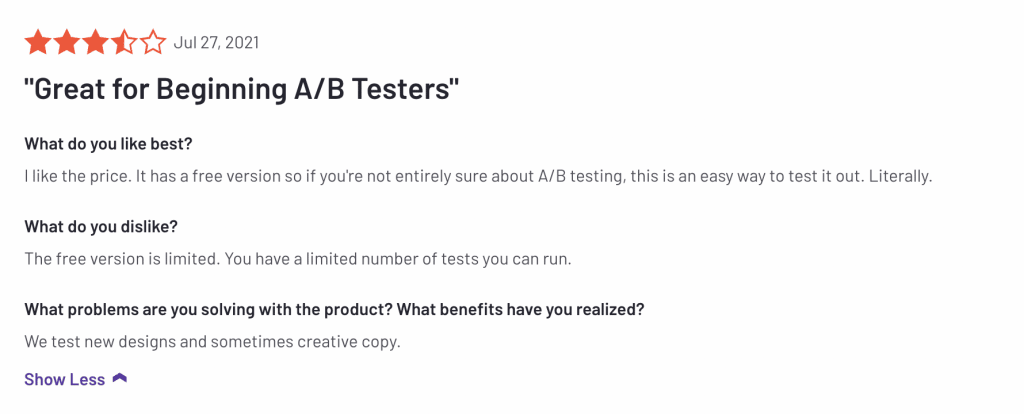
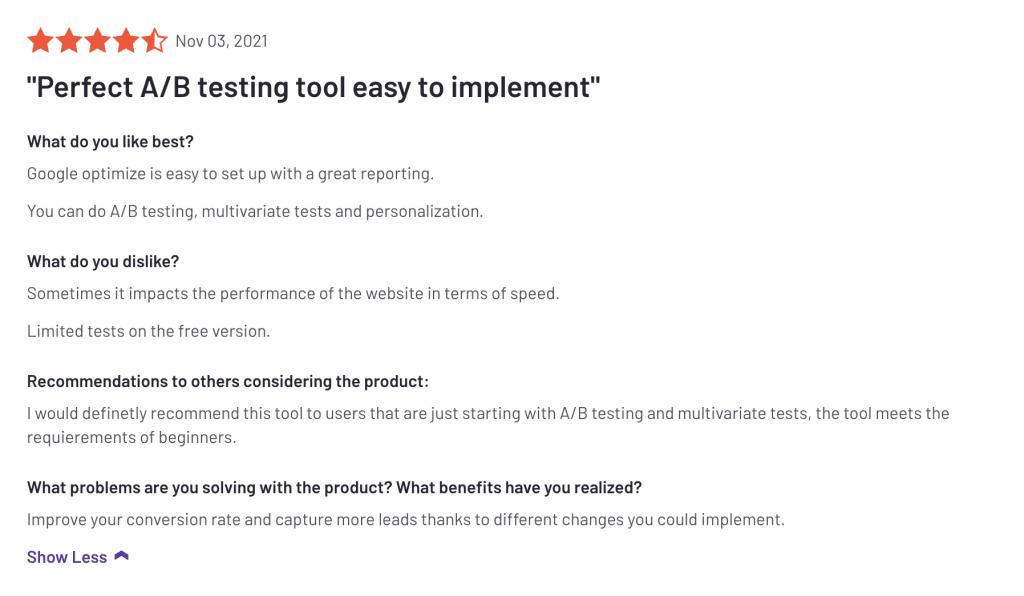
Now, Let’s Move to AB Tasty
What is AB Tasty?
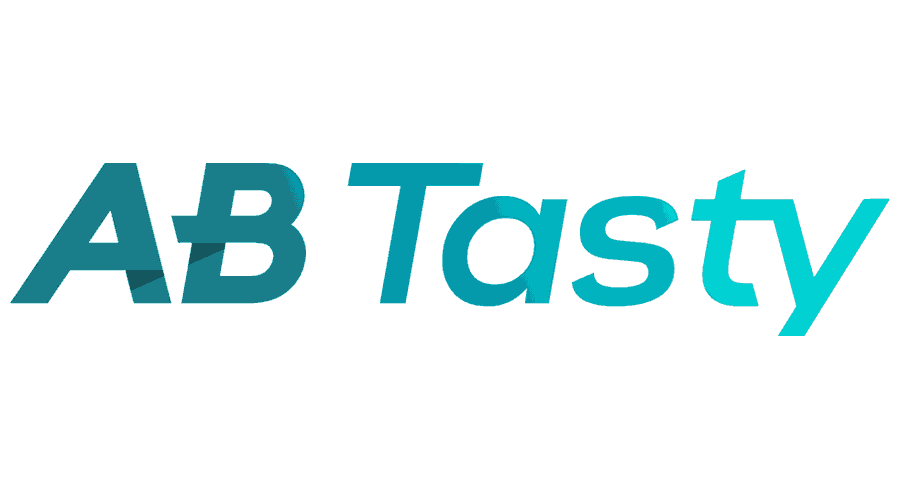
AB Tasty is a software solution designed to boost conversions on websites and applications.
AB Tasty serves medium-sized companies to enterprises. It is designed for marketing & growth teams, Product Managers, Engineers, and Developers.
The tool conducts A/B testing, split testing, multivariate testing, and funnel testing. It can as well, segment traffic.
Advantages of AB Tasty
Personalization Campaigns
AB Tasty helps users launch personalized campaigns quickly through its customizable templates.
Multi-device Solutions
AB Tasty can work with different kinds of websites and mobile applications. It can work with mobile responsive websites, e-commerce sites, etc. Also, it comes in handy with open-source CMS and e-commerce platforms.
Build A/B tests using Visual Editor
Users can efficiently conduct A/B and multivariate tests and can change web pages.
Also, users can launch many tests, and the platform gives them access to the performance of crucial test indicators, like click rate, page views, etc.
Disadvantages of AB Tasty
Non-technical users
Making changes to landing pages can be difficult, especially if you are not a technical user, without developers skilled in CSS or JavaScript.
Also, it is hard for users to set up Google Analytics tracking.
That is why AB Tasty isn’t suitable for businesses with zero technical resources.
Timeline and organization
You can’t see experiments and projects on a timeline with their status and prominent results.
The organization of campaigns and personalizations lacks refinement. It makes it difficult for users to get to the place they want to be quick if they have a lot of campaigns running at once.
AB Tasty Reviews
Here are some of the reviews about the AB Tasty tool from G2 website
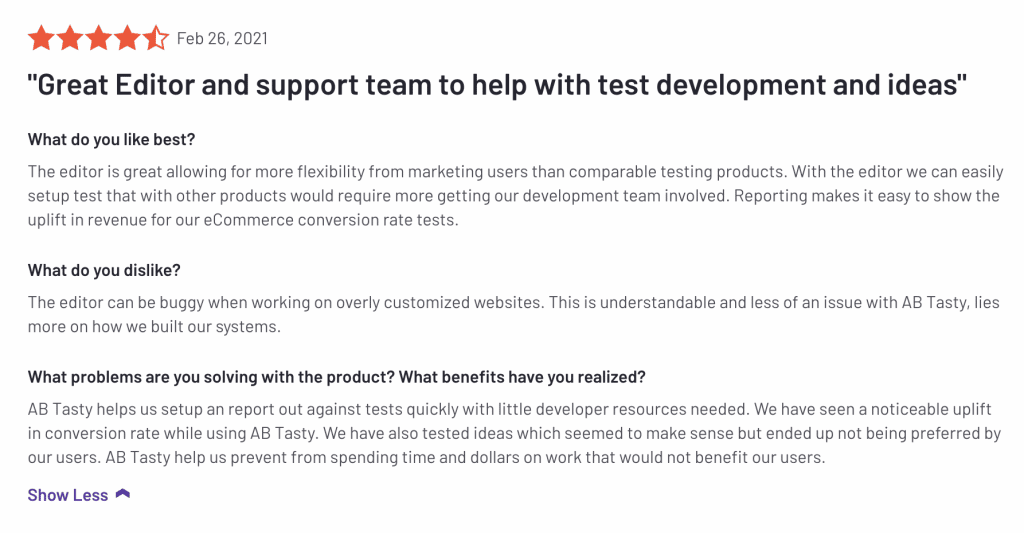
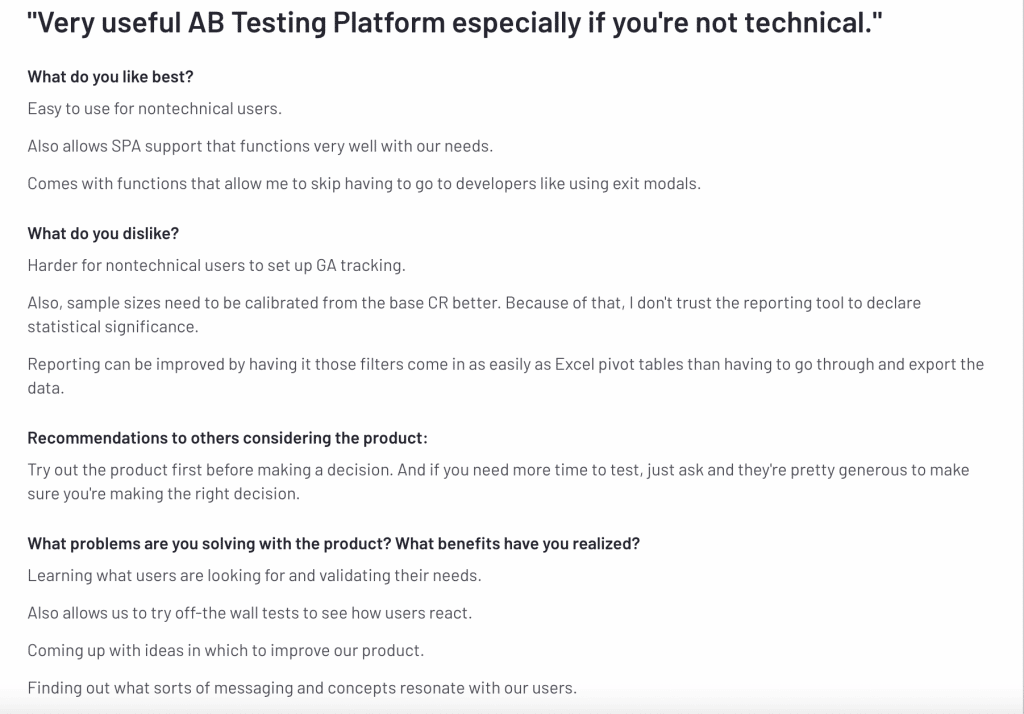
Wrapping Things Up
There you go!
While each tool has its pros and cons, you don’t need one with many features. It would be best if you had a tool that works well with your business.
Most likely, you’ll have to explore and way your options to get to the suitable one.
Tune in for upcoming blogs within this series to know more about other A/B testing tools.


